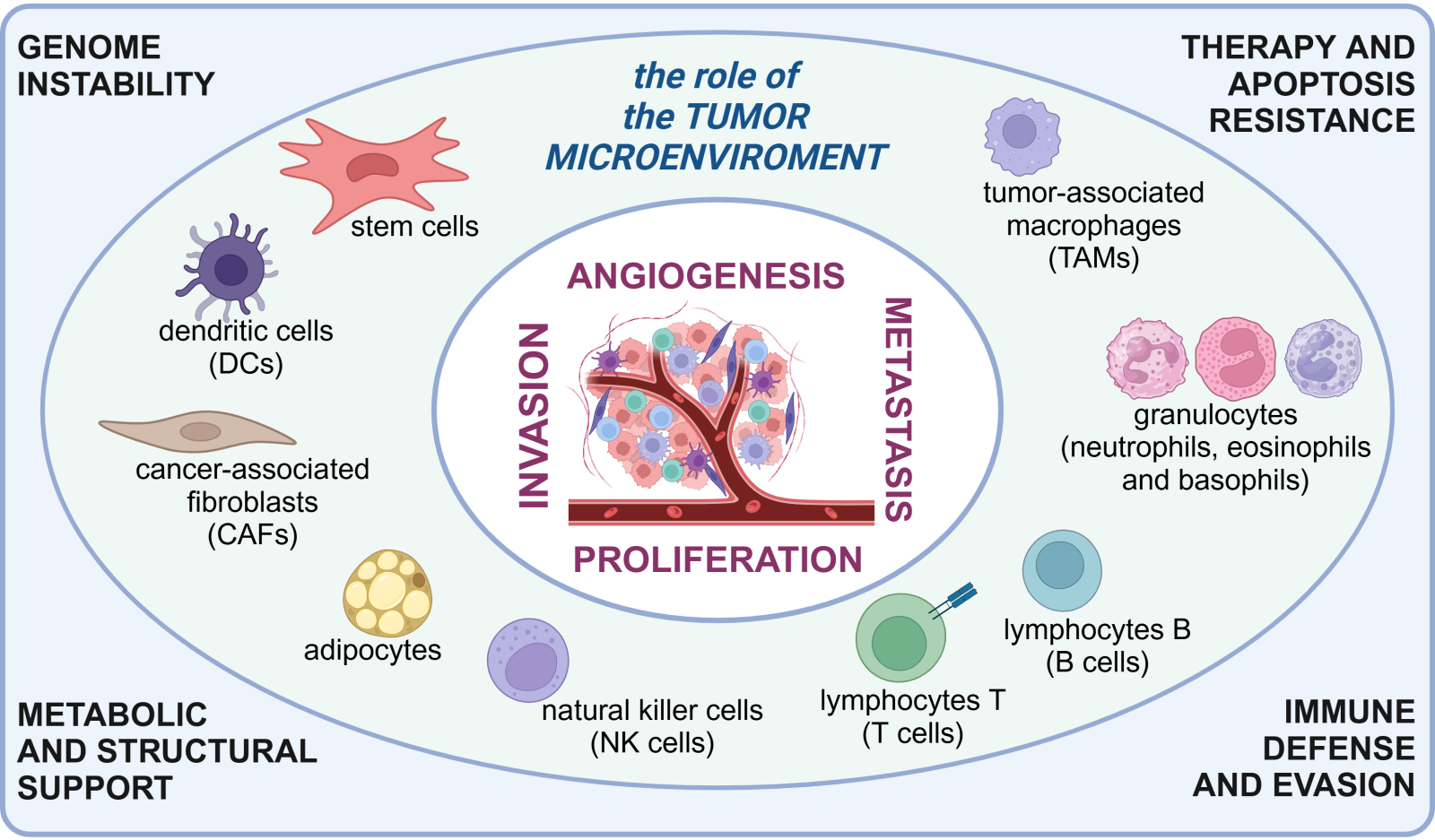
UWr researchers are co-authors of an insightful review article
A team of scientists from the Department of Physiology and Molecular Neurobiology at the University of Wrocław in collaboration with the Department of Molecular and Cellular Biology at the Wrocław Medical University, has published an extensive review article titled “Cross-Talk Between Cancer and Its Cellular Environment—A Role in Cancer Progression” in the journal Cells. The article was commissioned by the editorial team as part of a special issue entitled “Cell-to-Cell Crosstalk as a Target of Therapies”.
The issue focuses on the critical role of intercellular communication in both health and disease, with particular attention given to its potential as a target for modern therapeutic strategies.
Within this context, the article addresses the timely and significant topic of interactions between cancer cells and the various other cell types that form the so-called tumour microenvironment (TME) – a key element influencing nearly every stage of cancer development, from initiation and progression to therapy resistance.
How to understand the tumour microenvironment?
The importance of this subject is hard to overstate. Cancer has long been one of the leading causes of death worldwide, and with ageing populations, the number of cancer patients is expected to increase steadily. Understanding the tumour microenvironment – which, especially in the later stages of the disease, promotes cancer cell survival, metastasis formation, and treatment resistance – is not only a scientific challenge but also a pressing social and systemic issue.
Cancer research remains one of the most intensely studied areas in contemporary biology and medicine, with a constantly growing number of publications. It is within this field that researchers from the University of Wrocław – dr hab. Agnieszka Gizak, prof. UWr; dr Dominika Drulis-Fajdasz; dr Eliza Turlej, and PhD students mgr Aleksandra Domaradzka and mgr Justyna Radzka – conduct their studies. Their latest publication, developed in collaboration with prof. Julita Kulbacka from Wrocław Medical University (who co-supervises mgr Radzka’s PhD alongside prof. Gizak), aims to collate and organise scattered data concerning the roles of TME1 cells – both immune and non-immune – in a single, accessible resource.
In an age of exponential growth in oncology-related literature, the authors set out to create a useful tool for researchers, clinicians, and students seeking a reliable and up-to-date overview of one of the 17 most commonly diagnosed cancers.
A review that calls for a larger mug of coffee
A humorous moment in the development of the publication came when, after weeks of intense work, the authors completed the manuscript and glanced at the final document. Seeing that the full text already exceeded 100 pages, they felt a mix of pride and… mild panic. A question arose: “Will the reviewers even read it all, or will they immediately recommend cutting it down?” – after all, a review article of that length is no light read.
To the team’s surprise, two out of the four reviewers suggested not shortening but adding even more information. So, instead of trimming the content, the authors were asked to expand it further – all in the name of scientific completeness. This response reflects the growing need for such comprehensive resources – publications that organise scattered findings and highlight research gaps. The final result is a piece that may serve as a valuable compendium on the tumour microenvironment – even if it does require a slightly larger mug of coffee than the average journal article.
The article is available in Open Access on the journal’s website.
1 TME (tumor microenvironment) — refers to the non-cancerous cells in the vicinity of a tumour, which collectively form the tumour’s supportive environment.
====================
Text: dr hab. Agnieszka Gizak, prof. UWr, dr Dominika Drulis-Fajdasz, dr Eliza Turlej, mgr Aleksandra Domaradzka, mgr Justyna Radzka
Date of publication: 24.04.2025
Added by: E.K.



